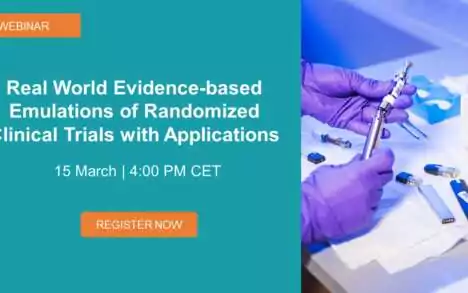Integrated Product Development
Forge a strategic product development management partnership on Integrated Product Development
Biopharmaceutical product development is a complex, costly and risky undertaking with an overall failure rate of > 96%, and a 90% failure rate during clinical development. Our experts in integrated product development (IPD) know what it takes to deliver new therapies to the patients that need them and bring deep scientific and product development expertise to every development challenge. Through our holistic bench-to-bedside integrated product development approach our IPD leads utilize their extensive global product development experience to guide clients in creating and executing global product development strategies that improve the probability of regulatory approval and successful commercialization.
Our Integrated product development solution (IPD) provides bench-to-bedside support and strategic partnership from early discovery through clinical development for companies bringing new drugs, biologics and medical devices to market with the scientific and strategic consulting support of our IPD experts. Our IPD leads have extensive global development experience and can help create efficient and time-saving global development strategies that include all key functional areas (clinical, regulatory, statistics, quality, CMC, among others). Our leads are also experienced in facilitating multi-disciplinary integration across the various interdependent functions, which increases a product’s chance of commercial success by optimizing program execution thereby reducing costs and white space between stages which ultimately minimizes risk and improves probability of success.
A bench-to-bedside approach for Integrated Product Development
Bringing products to the market is a complex, risky, and costly journey. With a sharp focus on what is needed to bring your product to the market our IPD solution provides a framework for critical decisions that facilitates integration of multi-disciplinary teams and activities as part of the product development process, creating efficient execution of the development strategy. This integrated “Bench to Bedside” approach helps clients “see around corners” identify risks and develop more efficient and time-saving development strategies has the following benefits:
Optimizes decision-making and program execution.
Reduces cost and white space between stages.
Minimizes risk and improves the probability of success.
An Integrated Development Strategy (Product Roadmap)
Product development is a high-risk and expensive endeavor. When examining failed development programs, some themes stand out:
- Not having a destination and a roadmap.
- Spending excess time focusing on basic science before moving on to drug development-focused activities (they are not the same)
- Having a too sharp focusing on the next milestone without consideration of future development activities.
- Failure to interact with Regulatory Agencies early in development.
- Working in siloes and not taking a holistic, bench to bedside and integrated approach.
- Insufficient consideration of the regulators perspective on benefit:risk.
Not considering interrelatedness of different activities and not understanding the critical path.
The Target Product Profile (Destination)
A robust product development program must include a clear, well-defined destination – captured in the Target Product Profile (TPP) —that describes where your drug fits into clinical practice and the global marketplace and helps to define the development strategy including the various activities and studies as well as their timing. The TPP will:
- Define what unmet needs your treatment addresses and patient populations it will benefit.
- Establish the specific indications your drug will be used to treat.
- Outline the dosage, frequency and route of administration compared to the competition.
- Clarify beneficial safety and efficacy claims for patients and physicians.
- Differentiate your product from the competition – marketed products or those under development.
- Define the critical scientific and clinical questions your global development strategy and studies must address.
Our Integrated Product Development team helps to create or refine your TPP early in the development process to guide the design of an integrated development plan that includes a regulatory/clinical roadmap, strategy and risk mitigation plan.
Strategic Partnership and the IPD Team
PharmaLex puts together a team of subject matter experts, fit-for-purpose for the stage of development, led by a senior product development expert. The IPD lead and team work in close collaboration with client experts to forge a strategic partnership. This 1+1 = 3 approach leverages the expertise from both the IPD and client teams to optimize creation and execution of the global product development strategy. The team’s expertise encompasses the strategies and activities of all key functions needed for developing your product concluding with a successful launch and market entry. The team, under the leadership of the senior product development expert, will focus on critical issues such as :
- Understanding the unmet need, patient population and benefit of the product.
- Avoid having a solution looking for a problem.
- Is the innovation “druggable” with a clear path to market approval?
- Can it be developed (endpoints, recruitment issues, COGs)
- What will it take to bring the product to the market?
- Ability to pass regulatory scrutiny.
- Differentiation
- High-level understanding of the market/competitive and reimbursement landscapes
- Evidence of effectiveness in both animals and the clinic.
No matter what your product is, company leadership, potential development partners, licensors, and investors have similar expectations revolving around these critical issues. Mapping, proper planning and execution not only enhances your chances of regulatory success but also increases the chances of success funding cycles.
Related Services
Agency Interactions
PharmaLex has long-standing and extensive experience of interacting with the scientific committees and working parties of the FDA, EMA (e.g. CHMP, PRAC, COMP, PDCO, CAT) and with national Health Authorities. We frequently support our clients in Scientific Advice procedures at a national or central level, and in numerous health authority interactions throughout a product’s lifecycle (e.g. requests for PRIME eligibility, Orphan Medicinal Product designations, Pediatric Investigational Plans, Marketing Authorization Applications).
More InfoClinical Biostatistics
PharmaLex’s Global Statistics and Data Science team brings together a wide range of experts – from study design and planning to statistical analysis, reporting and data management. Our experts help companies with complex innovative trial design, translational and precision medicine, pharmacometrics, and data science across the clinical journey.
More InfoClinical Development Services
PharmaLex provides global Clinical Development / Clinical Regulatory expertise to support every step of the clinical development pathway, from first in man studies through registration studies as well as post approval programs. This includes software for management of trial master files, resources for day-to-day processing of trial content and associated expert consultancy through one of the PharmaLex family of companies.
More InfoClinical Trials Adverse Event Processing
Clinical trials play a crucial part in any drug development life cycle where it is key to gain information on a product’s safety profile. The PharmaLex international team of clinical safety experts, with large expierence in the management of clinical safety activities, effectively supports sponsors with Pharmacovigilance activities during clinical trial development programmes. PharmaLex designs […]
More InfoCMC Biologics
With over 75 CMC consultants across the globe, PharmaLex has substantial CMC expertise across all areas. We are able to offer an integrated solution combining the scientific, technological, non-clinical, clinical and regulatory expertise with our broad global project experience to meet your specific needs, from discovery to licensing and post-approval.
More InfoCMC Services
CMC strategy and documentation plays an important role from early development to authoring of the marketing authorization application dossier. It also extends to change control and maintenance throughout the product lifecycle. Moreover, CMC requirements are complex and different for chemicals, biologicals, biosimilars, herbals or homeopathics. PharmaLex guides you to the best CMC approach for your products in line with health authority requirements and helps you to stay CMC compliant with sustainable processes.
More InfoDevelopment Strategy
Our comprehensive approach meets the holistic needs of start-ups, venture capital funded firms and small to mid-size biotech companies, while our targeted expertise helps large pharmaceutical companies with specialized development strategies needed.
More InfoGap Analysis and Consulting
Place your Pharmacovigilance, Epidemiology, Risk management (PER) and Document Management activities in experienced hands. Whether you need an urgent solution for an unexpected problem or are seeking to outsource entire processes – our knowledgeable experts will be there for you no matter where you are. Expertise extends to Clinical document management (e.g. TMFs) and Regulatory document management (e.g. submissions, RIM, xEVMPD, IDMP) through one of the PharmaLex family of companies.
More InfoHealth economics and outcomes research (HEOR)
To achieve an effective patient access to the innovation, the product must demonstrate value to the funder, the payer, the clinicial, and the patient. We develop different types of health economic models from Early-Phase to highly complex. Demonstrate the economic value.
More InfoMarket Access Strategy
The key to unlocking market access, is the ability to look beyond the science, to understand the market dynamics that will shape the future and drive value. To gain market access in pharma and remain competitive, pharmaceutical and medical technology manufacturers must be able to demonstrate clinical and economic evidence to providers, healthcare decision-makers and payers.
More InfoPricing and Reimbursement
Being a global company with an extensive geographical reach, thus far, PharmaLex can carry out these evaluations in Europe, Australia, Canada and US.
More InfoRegulatory Writing / Scientific and Technical Writing
PharmaLex offers scientific, regulatory and technical writing, supporting clients in the development of medicinal products.
More InfoToxicological Services and Risk Assessment
Be it a drug, medical device, cosmetic, consumer product, or food ingredient, we at PharmaLex have mastered the science of toxicological risk assessment and have helped products sail through rigorous regulatory scrutiny and reach the market.
More InfoAvailable Resources
- 30th May 2023
- June 16 - 20th, 2024
FURTHER RESOURCES
Contact Us
Contact Form
Complete this form to stay in contact with us.
Global Approach
PharmaLex has 60+ offices in 32 countries serving more than 1600 satisfied clients worldwide. Search your nearest office.







